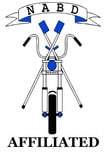IAM comment on government response to transport select committee
Posted on
The IAM is continuing its call for post-test training for young drivers in the light of the government’s response to the transport select committee.
IAM director of policy and research Neil Greig said: “We welcome the MPs’ call for more central government responsibility. We want to see national targets to reduce death and injuries on Britain’s roads. Getting rid of them was a mistake. We support a review of driver training, especially for young drivers. The current system of learning to drive abandons them when they need help most – in the first six months of solo driving. Post-test training in the first 12 to 18 months after passing the driving test would save lives. Having analysed systems of post-test training from other countries, we know that the best examples have reduced young male deaths by almost 30 per cent2*.”
The IAM wants to see accredited training offered to young drivers in the first 12 to 18 months after passing the basic driving test.
This would include:
• Training by qualified instructors.
• An initial on-road assessment to gain knowledge of their experience and to highlight any deficiencies.
• Off-road practice in handling in the wet, speed into corners and the impact of speed on stopping distances.
• Benefits such as cheaper insurance for young drivers who complete the training.



